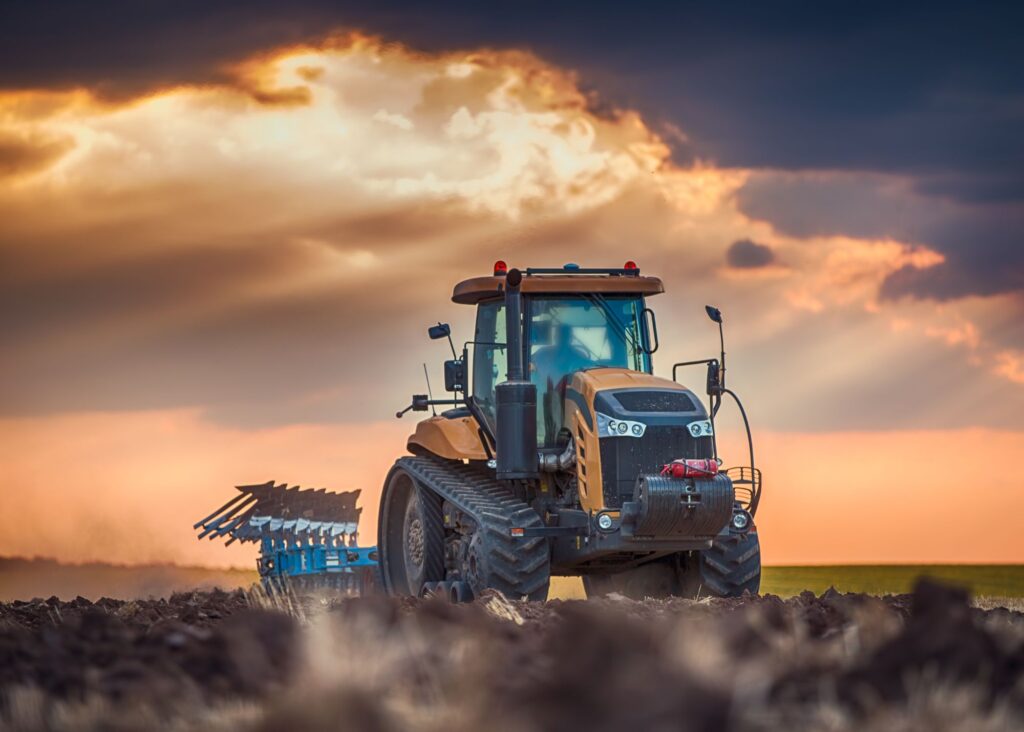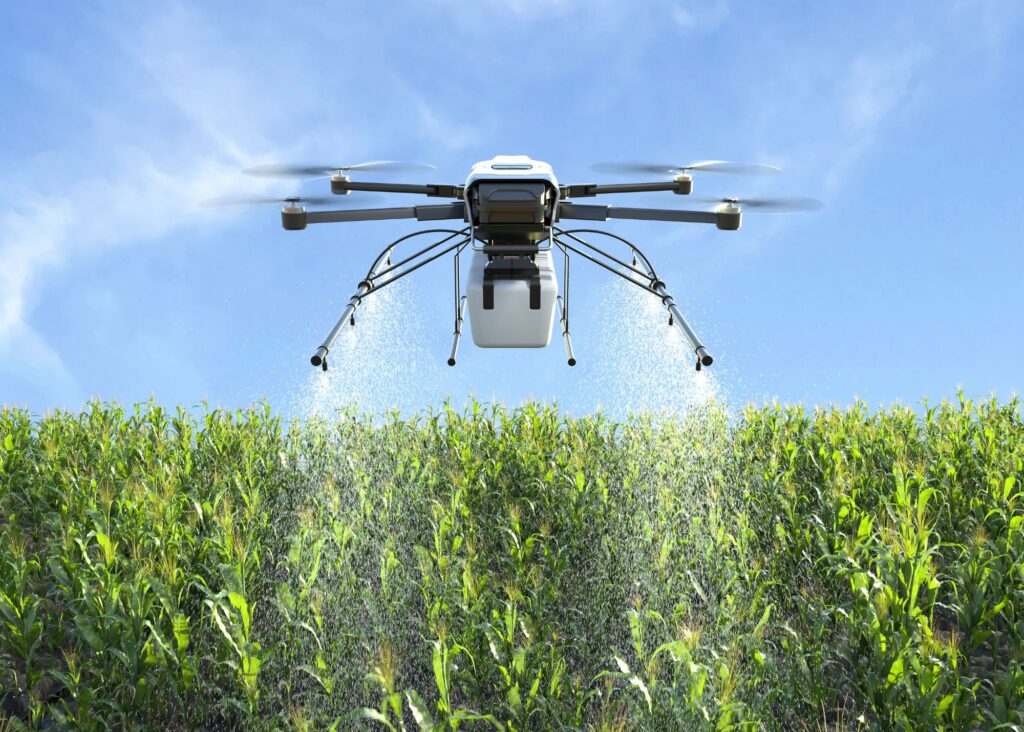On April 2, 2025 – a day the White House triumphantly labeled “Liberation Day” – President Donald Trump imposed a sweeping new array of tariffs on U.S. trading partners. Virtually no corner of the global market was spared: a 34% tax on imports from China and 20% on those from the European Union, with a baseline 10% tariff on all countries’ imports into the United States. The administration billed it as an overdue course-correction to revive domestic manufacturing. But for America’s agricultural technology (AgTech) sector, the immediate aftermath has been defined less by liberation than by anxiety. Instead of celebrating, AgTech innovators woke up to surging costs, supply chain headaches, and an uncertain global market for their products.
Rising Costs for High-Tech Farm Gear: The tariffs have effectively raised the price tag on the building blocks of modern farming. Much of today’s precision agriculture hardware – from GPS-guided tractor components and robotics to smart irrigation sensors and crop-spraying drones – is either imported outright or assembled from imported parts. Now, many of those parts face double-digit duties at the border. As one industry report noted, “Precision agriculture tools and farm management software could… become more expensive,” potentially slowing adoption rates among farmers. For example, advanced sensors and cameras essential to autonomous farm equipment are predominantly sourced from China; suddenly, those components carry a hefty tariff-induced markup. AgTech manufacturers must either absorb these higher costs (squeezing their margins) or pass them along to customers. In practice, many costs will inevitably be passed down the line. “Manufacturers will either absorb the cost or pass it on to dealers and, ultimately, farmers,” warns Eric Wareham of the North American Equipment Dealers Association – and “there’s no absorbing this”. The result is that a cutting-edge robotic tractor or drone system might now cost a farm significantly more than it did last season, putting new tech out of reach for some. Farmers, already facing thin profit margins, are likely to delay or cancel equipment upgrades in response. Indeed, U.S. sales of new farm machinery were already dropping in early 2025 – tractor sales down 15.8% year-on-year and combine harvester sales plunging nearly 79% compared to early 2024 – and the tariff shock is expected to amplify this pullback as farms adopt a “wait-and-see” stance.

Global Supply Chains in Turmoil: Behind every “smart” piece of farm equipment is a globe-spanning supply chain. AgTech startups and equipment giants alike depend on foreign-made microchips, steel, batteries, and other inputs to build their products. By slapping tariffs on dozens of countries at once, the U.S. has sent a jolt through these supply lines. Crucial AgTech components that once moved freely into American factories now encounter bottlenecks – and pricier paperwork – at ports. “Increased tariffs on essential agtech imports will likely lead to higher operational costs for businesses… Companies might also face supply chain disruptions, leading to delays and potential shortages of critical components,” one PitchBook analyst cautioned in a recent report. Those words now seem prescient. In the wake of “Liberation Day,” some AgTech firms are scrambling to redesign products or find alternative suppliers for tariff-hit parts. Others are stockpiling inventory to hedge against rising prices, which can itself create shortages elsewhere. The complexity is especially pronounced for North American supply chains: many U.S. agritech products are co-manufactured with Canadian or Mexican partners, shuttling parts back and forth across borders. Under the new regime, that model becomes painfully expensive – potentially incurring tariffs at each crossing. As Dana McCauley of the Canadian Food Innovation Network explained just weeks before the tariffs hit, so much agricultural manufacturing is integrated that a single item might cross the U.S.-Canada border multiple times during production. If each crossing faces a tariff, “all of a sudden, nobody’s making money on either side of the border”, she said. Her frustration was palpable: “Companies that should be focused on innovation are now having to expend time, brain power and money into scenario planning to deal with tariffs when they could be building stuff, fixing real problems and making real value.” In short, AgTech executives are being forced to become trade strategists, diverting energy from research and development into logistics and legal workarounds.
The tariffs on steel and aluminum add another twist to the supply chain tale. Modern farm machinery is metal-intensive – and Trump’s trade measures include a 25% duty on imported steel and aluminum. Domestically produced metal has suddenly gotten pricier too, since U.S. steel mills face less competition and can raise their own prices. The Association of Equipment Manufacturers (AEM), representing major firms like John Deere and AGCO, minced no words: it said it was “alarmed” by the sweeping metal tariffs, which “will further escalate trade tensions and add to global economic uncertainty.” The AEM estimated that production costs for farm equipment could rise by as much as 7% as a direct result. Seven percent may sound modest, but on a combine harvester that costs several hundred thousand dollars, it’s a significant increase – one likely to be felt by manufacturers and farmers alike. Facing higher input costs and unsure demand, equipment makers have already started dialing back production. AGCO, one of the big-three tractor manufacturers, reported that it is cutting its North American factory output by 35-40% in early 2025 to prevent unsold inventory from piling up. These kinds of cutbacks, while prudent in the short run, carry longer-term implications: fewer production runs can slow down the introduction of new models and delay the refinement of innovative features. In other words, the turmoil in supply chains and manufacturing isn’t just a logistical hiccup – it threatens to pump the brakes on AgTech innovation itself.
Squeeze on R&D and Startups: Perhaps the starkest irony of the “Liberation Day” tariffs is how they undercut the very innovation and self-reliance they purport to spark. Tariffs were sold as a way to push American industries to build more at home, theoretically benefiting sectors like farm tech in the long run. But in the near term, the sudden cost jolt is draining resources from research and development budgets and chilling the AgTech startup ecosystem. Young agricultural technology companies often operate on shoestring budgets, reliant on global supply chains to source affordable components and on investors’ confidence in a stable growth environment. Now they face a double whammy: higher costs for parts and materials, and a wave of investor uncertainty. A startup building, say, soil nutrient sensors might have sourced its circuit boards from Asia at low cost; with a 34% tariff, that cost advantage evaporates. If the startup raises prices to compensate, it risks losing price-sensitive farm customers; if it swallows the cost, its runway (time before it runs out of cash) shortens. Neither bodes well for aggressive innovation. According to the PitchBook analysis, higher costs and supply chain uncertainties could deter investment in R&D, “slowing the pace of innovation in the agtech sector.” Established AgTech firms echo this concern: the consensus among economists is that tariffs are more likely to hinder, rather than promote, domestic innovation because they create an uncertain business climate and distort market signals.
Startup investors are paying attention. Even before the April 2 announcement, venture capitalists had grown cautious, remembering how trade tensions a few years ago hurt agribusiness earnings. Now, with an actual trade war erupting, some investors are re-evaluating risk plans for AgTech. If a startup’s business model depends heavily on imported tech or selling to global markets, funding might become harder to secure. Canadian agri-food startups, for instance, have been nervous for months about U.S. tariff threats; many have started revising their pitch decks and exploring markets beyond the U.S., fearing American growth plans could be derailed. U.S. startups face a mirror-image problem: those who hoped to scale by exporting American ag innovations abroad must worry that foreign customers will shy away (either due to high U.S. prices or their own countries’ retaliatory tariffs). “It is absolutely time for those companies to think about where else they can do business,” McCauley advised Canadian firms in February – advice that might now apply to Silicon Valley agtech ventures as well. In the boardrooms of AgTech incubators and venture funds, “tariff scenario planning” has become a buzzword, supplanting the previous excitement over growth strategies. Every dollar spent navigating tariffs, of course, is a dollar not spent on developing the next breakthrough in farm AI or crop biotech.
Retaliatory Crossfire Hits AgTech Exports: Trade wars are never one-sided. Within days of Trump’s tariffs, America’s trading partners have retaliated in kind, and U.S. agricultural technology is squarely in the crossfire. China – one of the largest growth markets for U.S. farm equipment and AgTech – swiftly answered Trump’s move with its own penalties. Beijing placed 10% tariffs on a list of over 50 U.S. agricultural and farm products, including farm machinery. Everything from tractors and combines to precision planters and dairy milking robots now costs Chinese buyers extra, making American-made ag machinery less competitive in China overnight. This retaliation was no idle threat: it took effect on February 10 (coinciding with earlier U.S. tariffs implementation) and is now part of the new status quo. For companies like John Deere, CNH Industrial (maker of Case IH and New Holland equipment), and a host of smaller AgTech exporters, the implications are dire. These firms count on international sales for a substantial share of revenue – revenue that funds a lot of their innovation. If Chinese farms start delaying purchases of U.S. equipment or switch to European or domestic Chinese alternatives due to the tariff, U.S. companies could see sales erode and R&D budgets shrink accordingly. “With shifting trade relationships, the long-term concern is that key markets will seek alternative suppliers,” noted Eric Wareham of the equipment dealers group, potentially leaving U.S. farmers and manufacturers with fewer buyers for their products. In other words, today’s lost sale in Asia could become a permanent loss of market share, as overseas competitors step in to fill the void.
And China is just one front. The European Union has hinted at its own reprisals against the U.S. tariffs, and America’s NAFTA neighbors, Canada and Mexico, have bristled at being hit with “friendly fire.” Both countries send large volumes of agricultural goods and equipment to the U.S., and both could answer Trump’s tariffs with new taxes on U.S. exports – potentially including high-tech farm equipment. Recall that agricultural machinery from the U.S. is already subject to a 10% retaliatory tariff by China; a similar retaliatory stance from Canada or Europe would further squeeze American equipment makers. Canada, for example, might target U.S.-made tractors, combines, or AgTech software services in response to being slapped with a 25% import tariff on its goods. Europe could levy tariffs on American precision ag software or biotech seeds. The tit-for-tat dynamic means U.S. AgTech firms not only pay more for inputs, but also earn less on exports – a brutal pincer movement on their profitability. The American Farm Bureau Federation, which represents farmers (the end-users of much AgTech), has repeatedly warned that agriculture tends to bear the brunt of trade wars. Farmers have “lost money on most major crops for the past three years,” noted AFBF President Zippy Duvall, and “increased tariffs threaten the economic sustainability of farmers” by inviting retaliatory hits to U.S. agricultural exports. Those lost sales abroad reverberate back to innovation at home: when U.S. farm incomes fall – as they did by a staggering $27 billion during the 2018-19 trade war – producers become extremely cautious about spending on anything not absolutely essential. New technologies, from blockchain-based grain tracking to AI-driven soil analysis, can start to look like luxuries to be deferred. Thus, retaliatory tariffs risk dampening demand for AgTech solutions worldwide, shrinking the market just when many U.S. startups were poised to scale globally.

“We’ve Seen This Movie Before”: Stakeholders Speak Out – Across the agricultural spectrum, a sense of déjà vu is setting in. Farm-state lawmakers, industry groups, and agricultural innovators remember the last round of trade turbulence in 2018-2019, and many are openly worried that 2025 could be worse. The American Farm Bureau, typically a stalwart ally of Republican administrations, broke from celebratory rhetoric to urge a quick end to the cross-border crossfire. The Farm Bureau pleaded for a “swift resolution to trade disagreements to avoid tariffs that put farmers and ranchers in the crosshairs of retaliation.” While acknowledging the goal of fair trade, they stress that American farmers are being caught in a dangerous crossfire, precisely at a time when farming profitability is already low. Farm Bureau’s stance reflects an underlying fear: that farmers will ultimately pay the price for these policies, either through higher costs or lost export markets. For AgTech firms, that’s a chilling prospect – if their farmer customers suffer, so do their own businesses.
Major AgTech companies and their trade associations are likewise raising red flags. The Association of Equipment Manufacturers (AEM) has emerged as one of the most vocal critics of the tariff strategy. Representing hundreds of equipment and technology providers, AEM warns that the trade war is “a tax paid by Americans” – one that “will stifle economic growth and undermine the competitiveness of the United States”. Kip Eideberg, AEM’s senior VP, bluntly stated that broad tariffs at these levels haven’t been seen since the 1930s and carry the risk of “deepening the Great Depression”-style consequences. Such language is unusually stark for the manufacturing sector, underscoring just how high the stakes feel. Similarly, the North American Equipment Dealers Association has spoken of a “perfect storm” in the farm machinery market, as tariffs pile on top of existing challenges like rising input prices and a glut of used equipment. Equipment dealers – the folks who actually sell tractors and combines to farmers – fear they will be the first to witness farmers canceling orders due to cost hikes. “Dealers are buyers, too,” notes Wareham, “so yes, they will have to pass on the cost” to farmers. In other words, nobody along the chain is spared.
Voices from the startup community echo these concerns, albeit with a mix of trepidation and resolve. Many AgTech entrepreneurs are dismayed that a sector built on innovation and forward-thinking is now mired in trade policy woes. “This trade war will force farms to close,” one agriculture startup mentor lamented in an online forum – a hyperbolic statement perhaps, but emblematic of the fear that the weakest players in the farm economy (small farms and nascent startups) could go under if the situation drags on. On the other hand, a few entrepreneurs see a silver lining in all the clouds. They argue that if imported tech becomes costlier, that could drive a stronger “Made in America” movement for ag tech. For instance, some U.S. drone and robotics companies hope to get a boost in the domestic market as Chinese-made drones (which have dominated the sector) become more expensive and face U.S. government scrutiny. A small Illinois-based drone startup recently pointed out that farmers nervous about Chinese technology – due both to tariffs and security concerns – are now calling to inquire about American-made alternatives. Likewise, automation firms like Sabanto believe their moment may arrive sooner rather than later. Sabanto, which develops autonomous tractors in the Midwest, is betting that as farmers grapple with labor shortages and higher input costs (exacerbated by tariffs on things like fertilizer and machinery), they will turn to automation to save money in the long run. The founder of Sabanto, Craig Rupp, acknowledges the tariff headwinds but still projects optimism that his low-cost robotic tractors can help farms cut operational costs and weather the storm. In his view, the drive to farm more efficiently – using less labor, less fuel, and more data – only grows stronger when external costs rise. “I think it’s going to affect ag tech more so than the ‘big iron’ industry,” Rupp said of the trade war, implying that while big tractor sales might slump, farmers could invest in smaller-scale tech innovations to maximize productivity.
This optimism is cautious and not universal. For every AgTech entrepreneur hoping necessity will spark invention, there are others quietly shelving expansion plans or bracing for lean times ahead. Even those bullish on domestic innovation admit that developing and manufacturing high-tech agricultural equipment within the U.S. is not something that can happen overnight. Building new factories for sensors or chip fabrication, for example, takes years and massive capital – and America risks falling behind in the interim. “Why are we hobbling [our farmers’] competitive position by inviting retaliation?” asked Brian Runge, an agricultural economist, highlighting the long-term danger if U.S. agri-tech loses its edge globally.
A Precarious Path Forward: As the dust settles from the “Liberation Day” announcement, the U.S. AgTech sector finds itself at a crossroads. On one hand, the tariffs are intended to jolt the industry into a new era of self-reliance, perhaps even sparking a renaissance in American manufacturing of farm technology. Policymakers point to the potential for new jobs making tractors, drones, and AI farm systems on U.S. soil, freed from dependence on foreign suppliers. On the other hand, the immediate reality is that American AgTech has never been more entwined with the global system than it is today. Untangling those ties by brute force – via import taxes – comes at a steep cost. In the short term, American farmers and AgTech firms are paying more and earning less, a recipe that could easily lead to less innovation, not more. History offers a sober warning: the Smoot-Hawley trade tariffs of 1930, invoked by many commentators this week, preceded a collapse in trade that hurt all sectors, agriculture most of all. The hope is that this modern replay will not go so far.
What’s next? There are a few scenarios. The administration could negotiate exemptions or carve-outs for critical AgTech inputs, easing some pressure if, say, certain precision electronics or ag chemicals are spared from tariffs. Lawmakers in Congress – including a rare coalition of farm-state Republicans and Democrats – are already pushing back, with resolutions to roll back specific tariffs (like those on Canadian imports) gaining bipartisan support. If political pressure mounts (especially as 2026 elections draw nearer), there’s a chance some of these trade barriers could be dialed down or lifted, which would be a welcome relief for the AgTech community. In the meantime, the USDA is reportedly dusting off the playbook from 2018, readying farm aid payments to offset tariff-related losses. This might cushion farmers’ finances and indirectly help keep demand for new tech alive (since farmers who get aid might have more confidence to invest). However, as one analyst wryly noted, “Farmers getting squeezed on both ends… means taxpayers will get squeezed to help cover the consequences.” Essentially, the government might end up paying the industry for the collateral damage of its own trade policy – an outcome that few free-market proponents would celebrate.
For now, AgTech innovators must navigate an environment filled with both hazards and a strange new impetus to adapt. Some will adapt and even thrive – finding creative ways to cut costs, source locally, and design around supply constraints. The pressure to localize supply chains could, in time, spawn a more resilient domestic AgTech manufacturing base. Others will struggle, caught between expensive inputs and reluctant customers, possibly consolidating or exiting the market. The true test of these tariffs will be whether the short-term pain can truly translate into long-term gain for U.S. agriculture. Will American engineering prowess rise to the challenge, developing homegrown alternatives for everything from drone motors to greenhouse sensors? Or will the sector instead enter a lull, as high costs and trade barriers dampen the bold investments that fuel innovation?
As of this moment, the mood in the U.S. AgTech world is cautious, bordering on grim. One Iowa precision-ag entrepreneur likened the situation to “trying to grow delicate seedlings in a windstorm” – innovation being the seedlings, and the trade war the howling winds. Trump’s “Liberation Day” may eventually usher in a new era of self-sufficiency, but it has also unleashed powerful headwinds that threaten to blow out the sparks of innovation that have been driving the farm tech revolution. In the coming months, the sector will be watching data points closely: import prices, farm income trends, venture funding levels, and any hint of de-escalation or deal-making on the trade front. Each will tell part of the story of whether these tariffs end up as a speed bump or a roadblock for agricultural technology. For now, the American AgTech sector is in a holding pattern – hopeful that necessity will be the mother of invention, yet painfully aware that uncertainty is the enemy of innovation. The world will be watching how this grand experiment plays out on the farms and in the innovation labs of America’s heartland.




